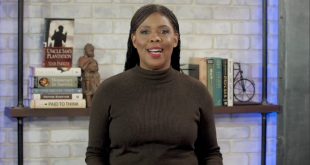 It is not easy to demonize people who have spent hundreds of millions of dollars of their own money to help educate poor children. But some members of the education establishment are taking a shot at it.
It is not easy to demonize people who have spent hundreds of millions of dollars of their own money to help educate poor children. But some members of the education establishment are taking a shot at it.
The Walton Family Foundation — created by the people who created Walmart — has given more than $300 million to charter schools, voucher programs and other educational enterprises concerned with the education of poor and minority students across the country.
The Walton Family Foundation gave more than $58 million to the KIPP schools, which have had spectacular success in raising the test scores of children in ghettoes where the other children are far behind in academic performance.
D.C. Prep, in Washington, whose students are mostly poor and black, has also received grants from the Walton Family Foundation. Its test scores likewise exceed those of traditional neighborhood schools, as well as the test scores of other local charter schools. Other wealthy people across the country have been doing similar things for years, including high-tech tycoons like Bill Gates and Michael Dell. It is one of the great untold stories of a unique pattern of philanthropy that makes America truly exceptional.
Yet these philanthropists have been attacked by the teachers’ unions and by others in the education establishment, including academics.
It was painful to watch a well-known historian of education on a TV talk show recently, denouncing people from “Wall Street” who have promoted alternatives to the failing public schools. Apparently, in some circles, you can just say the words “Wall Street” and that proves that something evil is being done.
You can listen in vain for any concrete evidence that these philanthropic efforts to help educate poor children are creating harm.
Instead, you get statements like that from the head of the American Federation of Teachers, saying, “they’re trying to create an alternative system and destabilize what has been the anchor of American democracy.”
If government-monopoly schools, with iron-clad tenure for incompetent teachers, have been an anchor, they have been an anchor around the necks of American students, who consistently score lower on international tests than students from countries that spend half as much money per student, and yet have students who outperform our youngsters, year after year.
It is not written in the stars that youngsters in ghetto schools have to score miles behind everybody else.
Data from the 1940s show test scores in Harlem schools comparable to test scores in white working class schools on New York’s lower east side. (See “Teachers College Record,” Fall 1981, pages 40-41.)
Even today, particular minority schools — sometimes charter schools, sometimes Catholic schools, and sometimes even regular public schools headed by principals who defy the prevailing educational dogmas — turn out black students who can compete with other students academically.
Teachers’ unions and others who defend the public school establishment decry competing schools, on grounds that they are somehow undermining the public schools.
One of the claims is that these alternative schools drain money from the public schools. But expenditures per pupil in the public schools have risen during the era of the spread of alternative schools.
Of course, if there were no alternative schools, the total amount of money going to the public school system might have increased more. But this would not necessarily produce more money per student, since charter schools typically do not get as much money per student as the public schools get.
Then there is the claim that alternative schools “skim the cream” of the students, and that this explains why their test results are better. But many, if not most, charter schools select among their applicants through a lottery.
Lots of things need to be done by lots of people to improve our education system, especially for schools in minority neighborhoods. Demonizing those who are trying to help is not one of them.
 Thomas Sowell is a senior fellow at the Hoover Institution, Stanford University.
Thomas Sowell is a senior fellow at the Hoover Institution, Stanford University.
Photo credit: Maryland Route 5 (Creative Commons)
 CURE News and Clergy Blog News and Commentary for Christians
CURE News and Clergy Blog News and Commentary for Christians



